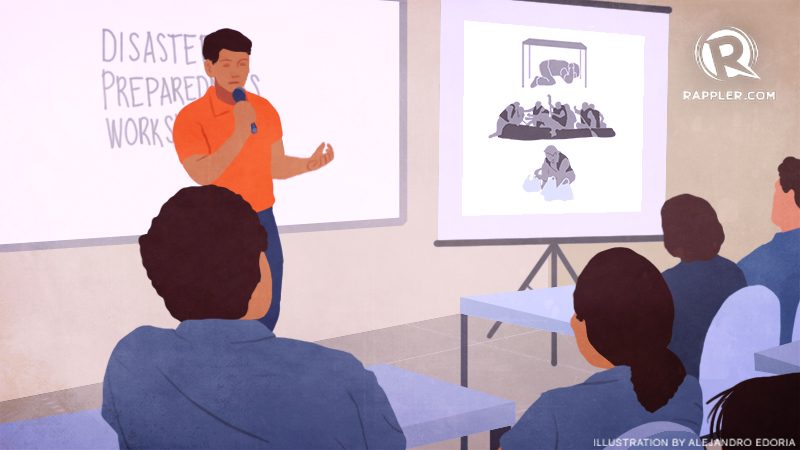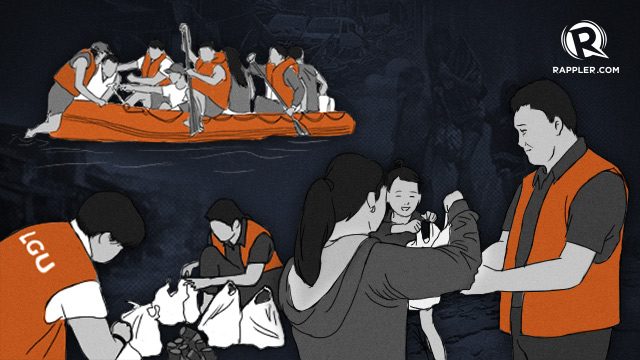SUMMARY
This is AI generated summarization, which may have errors. For context, always refer to the full article.

MANILA, Philippines – Should mayors be required to undergo a disaster risk reduction and management (DRRM) training?
This was what Sharon Arruejo, a Senior Weather Specialist at the state weather bureau PAGASA suggested on the second day of the DRRM workshop for media organized by the Office of Civil Defense (OCD) from January 27 to 29 in Tagaytay City.
In the Philippines, a country prone to almost all types of natural disasters, it is the local government unit (LGU) that is on the frontline when disasters strike. The Local Government Code of 1991 mandates LGUs to ensure the safety and preparedness of their people from any hazard. (READ: The role of LGUs, local councils during disasters)
“Nowadays, what happens is that LGUs are not being proactive because they don’t know the right decisions to make because they don’t have knowledge on DRRM,” Arruejo explained in a mix of English and Filipino.
The role of mayors
Local chief executives play a big role during disasters. Being a decision-maker entails being well informed about the vulnerabilities in their respective localities.
“In terms of disasters, they [mayors] are the first ones to make decisions. If they make wrong decisions, the outcome is not good either. Instead of minimizing the effects of a disaster, wrong decisions by LCEs may do more harm than good,” Arruejo said.
When Super Typhoon Yolanda (Haiyan) ravaged Eastern Visayas, a number of residents were killed when they were told to stay in evacuation centers which were located in storm surge prone areas.

Not a priority?
But while the law mandates LGUs to be on the frontline during disasters, not all local chief executives are active or have undergone trainings that would help them become educated about DRRM and the hazards in their respective areas.
Aside from having a hectic schedule, Arruejo thinks another reason why mayors don’t attend is because DRRM is not among their priorities.
“Every time we conduct lectures outside [PAGASA], we notice that, while not all, a lot of our local chief executives don’t include DRRM in their priorities,” Arruejo said.
In DRRM trainings her team conducted, mayors were supposed to be the participants. The mayors, however, would just send disaster managers to the training.
“I’ve been to a number of seminars where they [mayors] should be the participants, but what happened was that a representative would attend, if not the DRRMO, their disaster managers. If not, their municipal agriculturist or someone from the Department of Social Welfare would attend,” Arruejo explained.
“We’re not saying they should only prioritize DRRM. What we’re saying is they make it one of their priorities,” she added.
Disaster management training as a requirement
In a disaster-prone country like the Philippines, Arruejo said it would be really helpful if the disaster management training would be required in any of the following:
- Commission on Elections’ set of qualifications for those running for mayor
- Requirements before/upon taking oath of office, if elected
She also emphasizes the importance of including the 4 phases of disaster management in the training – prevention and mitigation, preparedness, response, and rehabilitation and recovery.
“Every time I conduct lectures, I always say that because personally, that is my advocacy,” Arruejo said.
“I see the lack [of disaster preparedness] that is happening in our country.” – Rappler.com
Add a comment
How does this make you feel?
There are no comments yet. Add your comment to start the conversation.